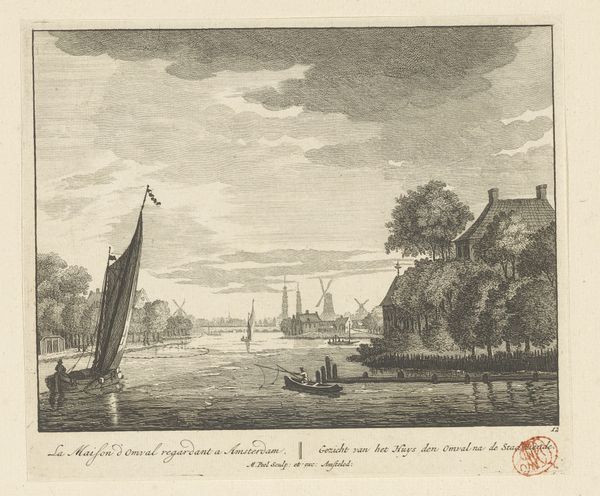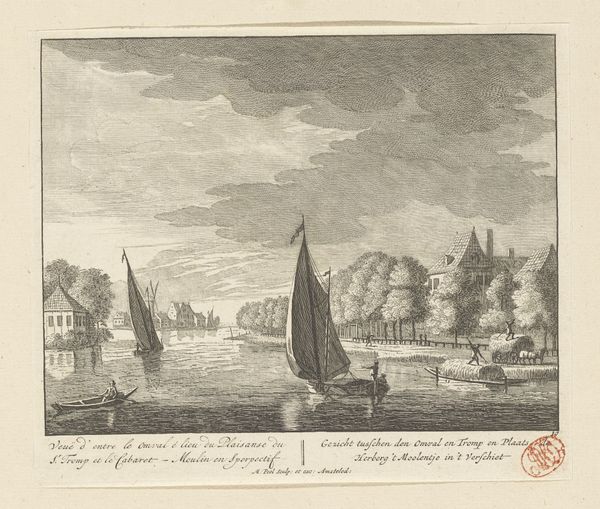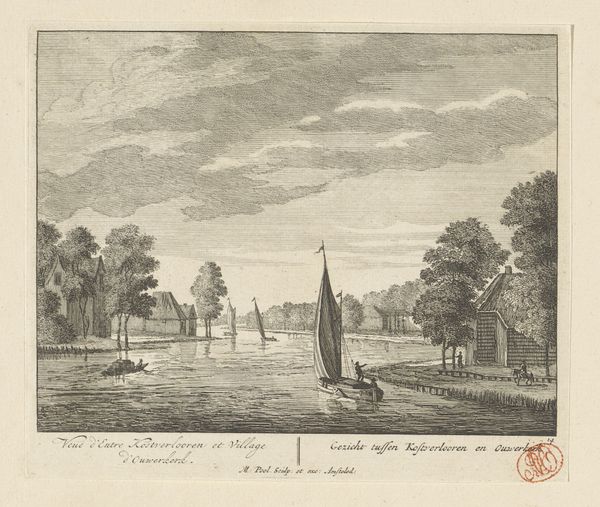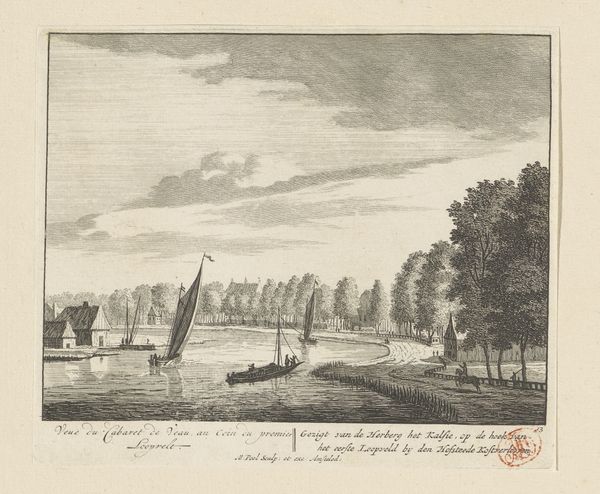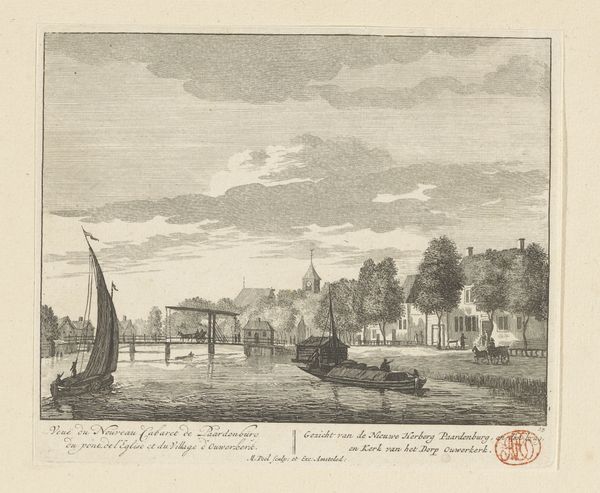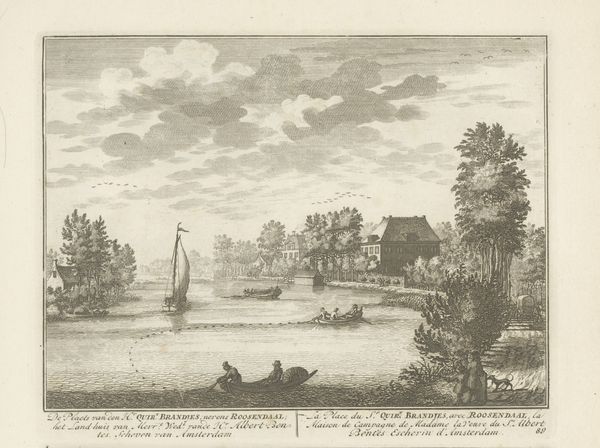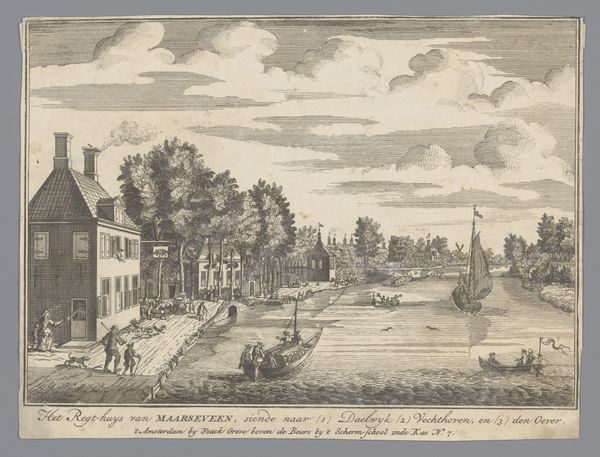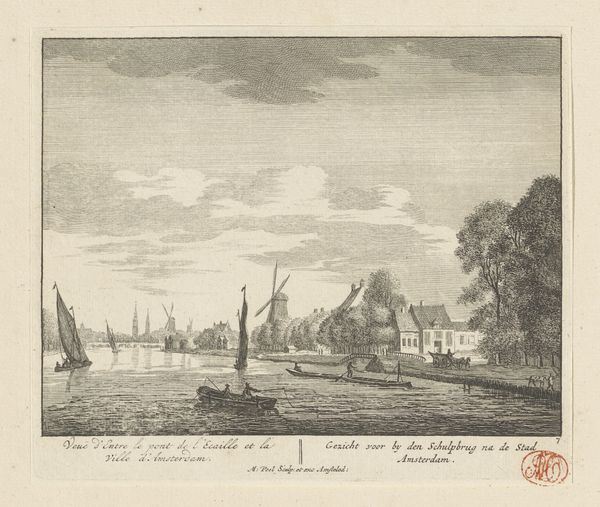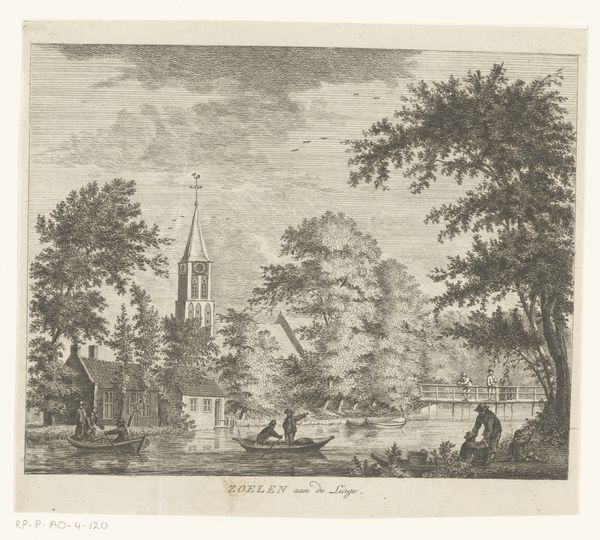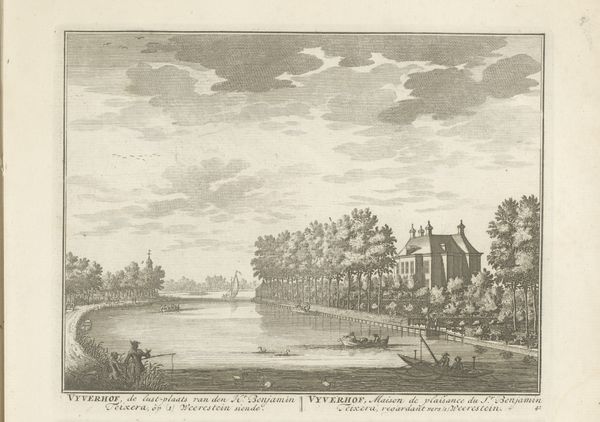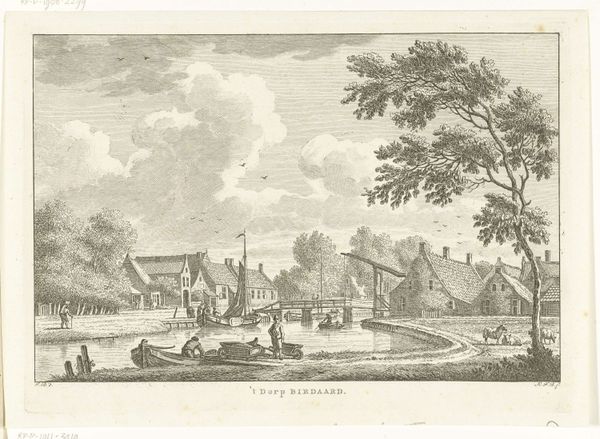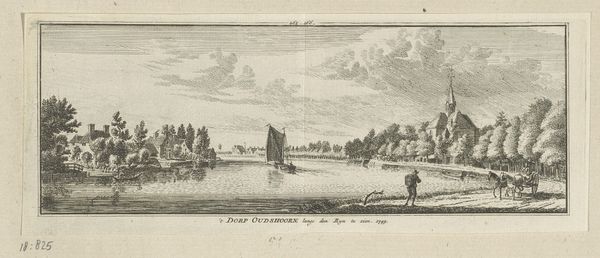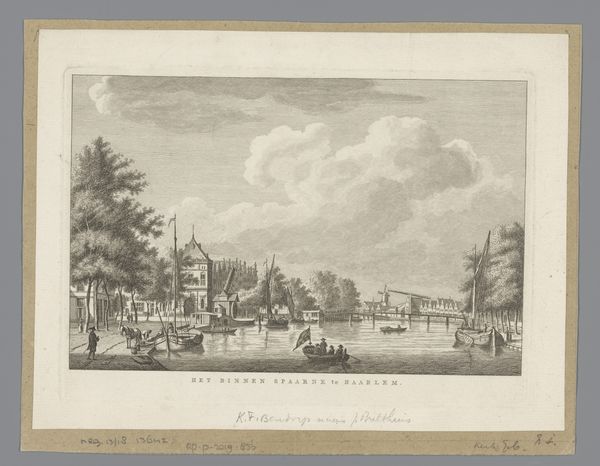
drawing, print, engraving
#
drawing
#
baroque
#
dutch-golden-age
# print
#
landscape
#
river
#
line
#
cityscape
#
engraving
#
realism
Dimensions: height 163 mm, width 194 mm
Copyright: Rijks Museum: Open Domain
Curator: Here we have Matthijs Pool's "Gezicht op de Amstel bij de Omval," a drawing turned engraving, likely created between 1708 and 1740. What are your initial thoughts? Editor: The immediate impression is one of peaceful industry. It’s so calm, yet so much activity fills the scene. There is a comforting simplicity, almost like a children’s book illustration. Curator: Indeed. It's intriguing how Pool captured the intersection of labor and leisure here. The print, likely part of a larger series depicting Amsterdam, speaks volumes about the Dutch Golden Age's economic prowess and the importance of waterways in shaping society. Notice the quality of line and detail rendered through the engraving process—a testament to skilled craftsmanship. Editor: Absolutely! Water, the lifeblood and connector. Boats, the obvious visual signifiers for the flow of goods and people, feature predominantly. But beyond the trade routes, doesn’t the scene also romanticize travel, adventure, and possibility? Water often represents the subconscious, emotions, change. Curator: An interesting reading. Consider also that this type of imagery, through the medium of prints, made this vision of Amsterdam more accessible for consumption. It could be disseminated, traded, sold to a growing middle class eager to invest in art that depicted their everyday life, almost as a type of visual news. The labour, in the image's production and the labour on the Amstel’s riverbank—a network of industriousness, really. Editor: That's very true, you know. However, observe the compositional positioning of the towers rising over the trees in the middle-ground, acting almost as symbolic guardians over this nexus. It might underscore the cultural pride the artist felt and wanted to convey to others. The skyline echoes this narrative and anchors us within the Dutch Golden Age iconography. Curator: The engraving provided a clear narrative structure that amplified the city's brand in this period. With the careful hatching and clean, controlled lines the image’s production and the social message merged seamlessly. The result is accessible. It's no accident that this image appears in multiple editions in this era. Editor: This reminds me that artworks never exist in isolation. By tracing some recurring themes in Pool’s creation, from Amsterdam as an epicenter of commerce to the pictorial use of the river as metaphor, it has allowed us to bridge history and psychology through a singular viewpoint. Curator: A great example of the power of images embedded in our daily experiences.
Comments
No comments
Be the first to comment and join the conversation on the ultimate creative platform.
